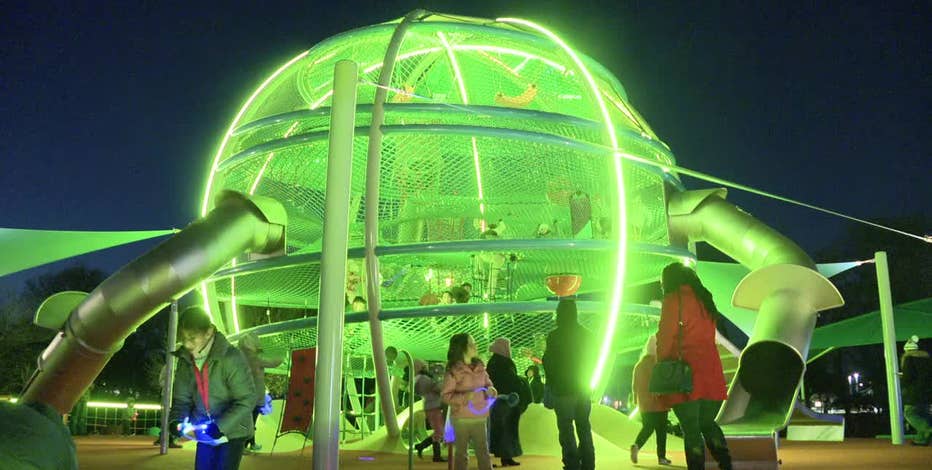Farmers Branch glow-in-the-dark park reopens after repairs, safety improvements
FARMERS BRANCH, Texas - A popular new glow-in-the-dark park in Farmers Branch reopened for Spring Break Monday.
It was because of this popularity and other issues that the Joya at Oran Good Park had to close for over a week.

One notable change is a chain link fence surrounding the park's perimeter so it can be locked up at night.
City officials say the park was closed for maintenance but also to make some safety improvements.
The glow-in-the-dark park in Farmers Branch first opened in January. It was a big hit with more than 1,000 people at its grand opening.
The large numbers fluctuated for weeks, and its success came with some immediate issues, causing the city to close the park for 10 days to make changes.
Repairs made to popular glow-in-the-dark park
A wildly popular new glow-in-the-dark playground in Farmers Branch is back open for spring break. The Joya playground at Oran Good Park was shut down for critical repairs just a few weeks after opening. The city has also added fencing and will begin enforcing a closing time.
Robert Diaz is the Farmers Branch parks and rec director.
"It can be better, and we wanted to do better and think through some things," he said. "That’s why we took a reset last week."
Aside from fixing broken equipment, the city is making sure cars do not park on Tom Field Road in front of the park, putting up barricades and signs along the street.
There will also be permanent fencing, replacing this temporary fencing to secure the park.
Featured
Farmers Branch glow-in-the-dark park to hold grand opening Saturday
Joya at Oran Good Park will feature six different play areas and include a zip-line, a spin zone, swings, an obstacle course and a 27-foot sphere all adorned with LED lights.
"We do want to keep a perimeter fence. We are looking at more permanent options, but we decided to leave this up so we can secure the playground area, especially after we are closed," Diaz said.
The park is open daily from noon to 10 p.m. when the park turns its lights off.
Diaz says police had to deal with people hanging out in the park after it closed. He hopes the fencing helps alleviate that.
"We are working with public safety to secure the playground after 10 because they were getting a lot of calls after 10 p.m., so we are trying to mitigate that," Diaz said.
The park was paid for with a mix of COVID-19 recovery dollars, a state grant and city funds.


